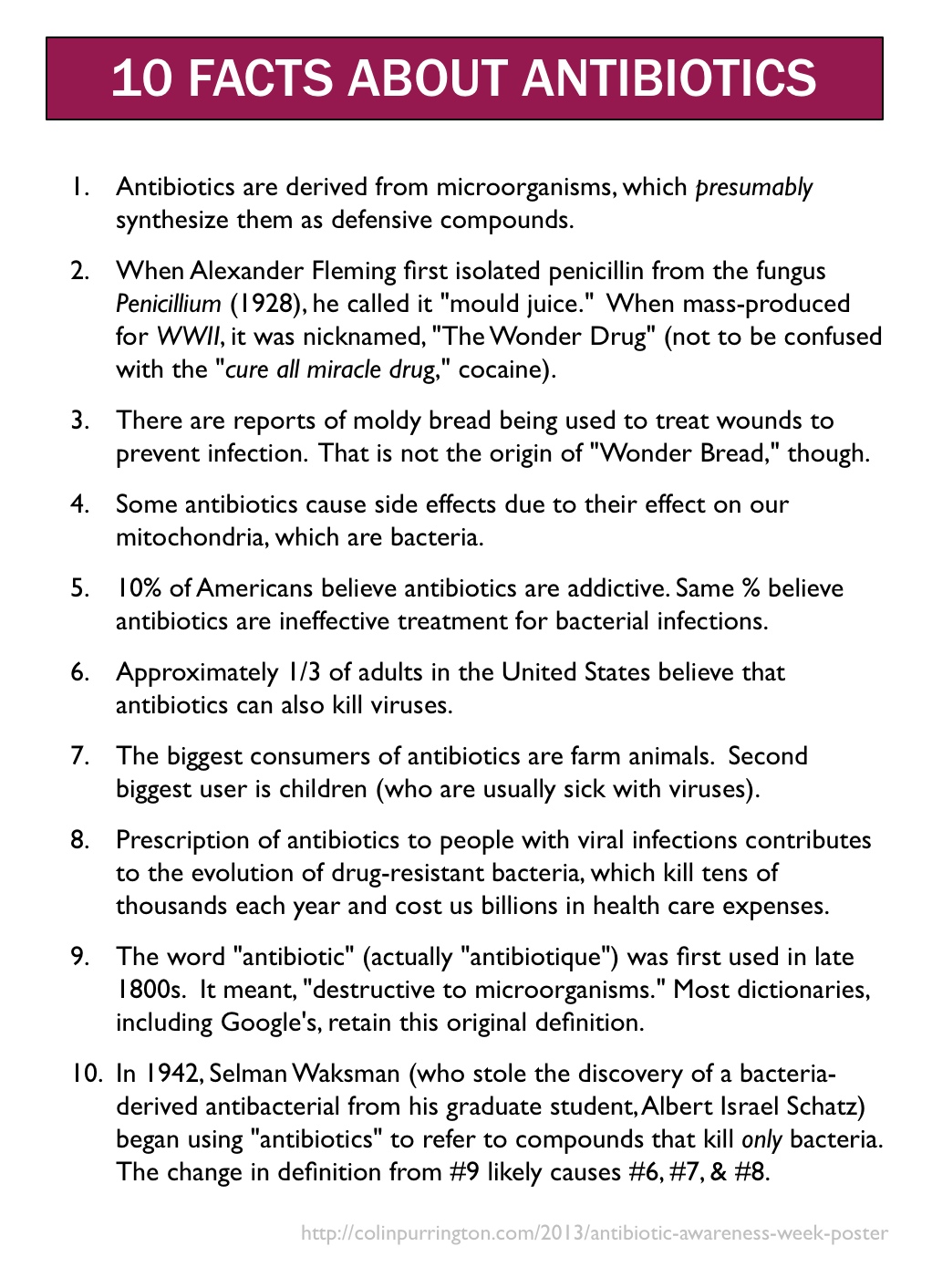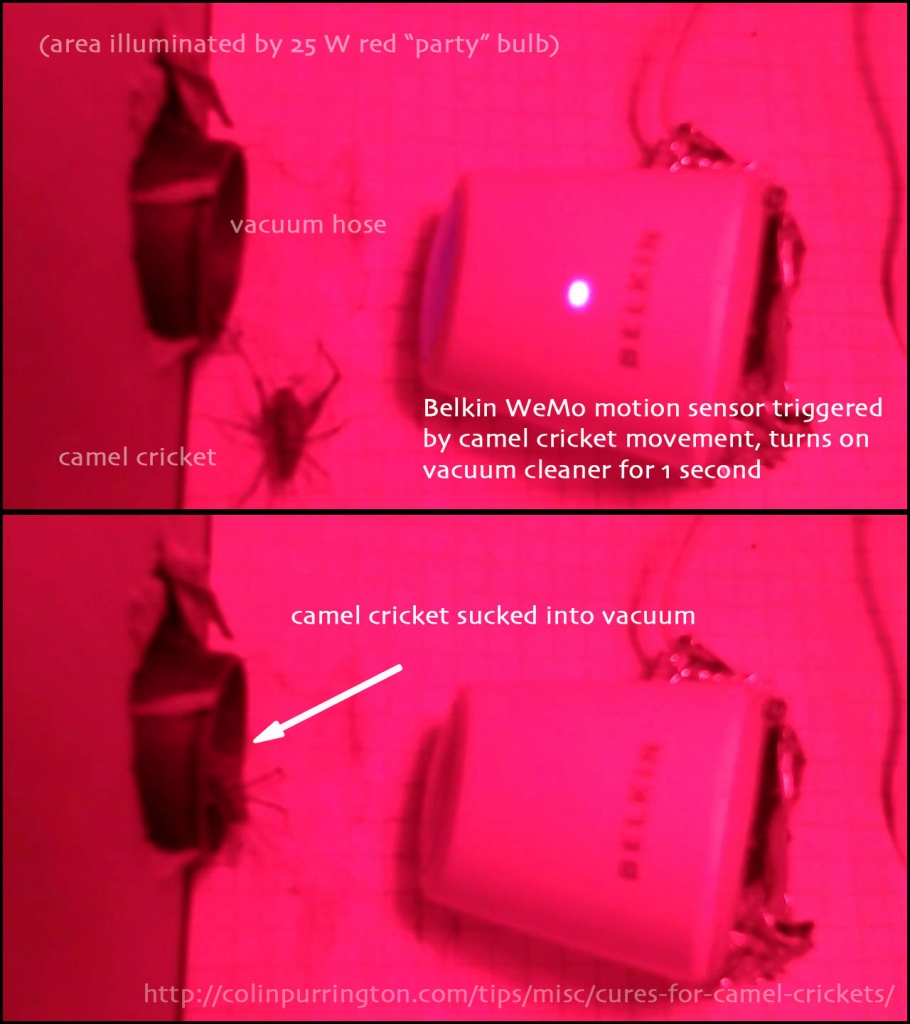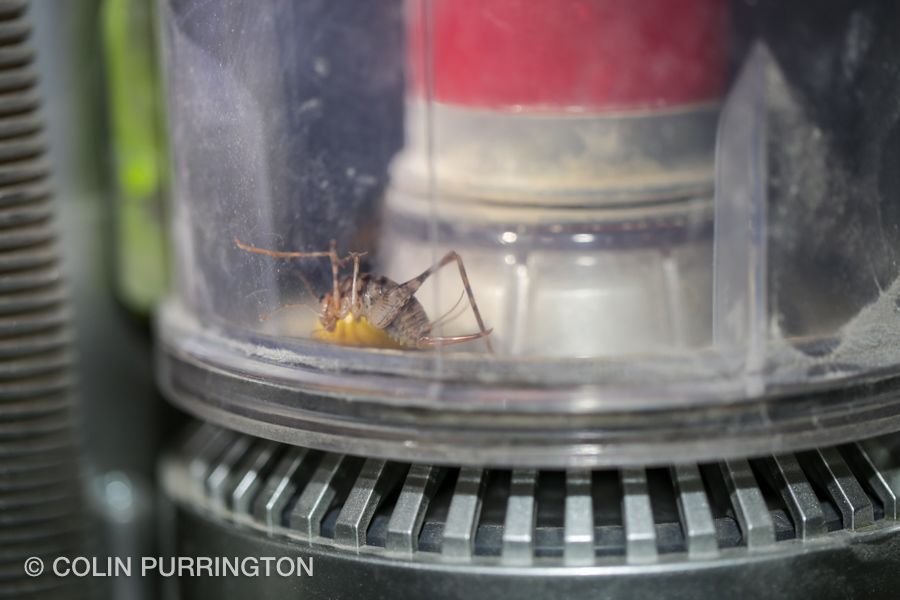Ten interesting facts about antibiotics, for Antibiotic Awareness Week (Nov 18 -24, 2013). Below is an image that can be used for presentations. PDF version for printing: facts-about-antibiotics.pdf.
I’ve tried to craft the above poster with information that is mildly interesting, with the hope that people (people like you?) might pass the link along. There are 100s of posters on the internet … but they seem to be completely ineffective at educating the public (according to an experiment). In my view, the problem is that all of these posters use “antibiotics” instead of the correct term, “antibacterial.” Please see my page, “Curbing the misuse of antibiotics” for details on why antibiotic/antibacterial choice matters for the public, even if it doesn’t matter to you (who probably have a higher degree).
Below are some links that explore some of statements in the PDF above. I’m putting them below the fold because they are probably TMI for 99% of the people who might be interested in the above PDF. If you are that 1%, go crazy.
- To reduce the number of patients demanding antibacterials for viral infections (often for their kids), doctors are urged to think carefully how they speak to patients. See this paper (from The Alliance for Prudent Use of Antibiotics) for insightful suggestions on linguistic “levers” that physicians can use toward this goal. My suggestion: say, “An antibacterial will not treat your viral infection,” rather than “An antibiotic will not treat your viral infection.”
- Antibiotics are generally assumed to be primarily defensive compounds, but that assumption is under review: see excellent articles by Raaijmakers and Mazzola, Alicia Fajardo and José L Martínez, and Aminov.
 10% of Americans believe antibiotics are addictive. Source: Pew Research Center (pdf). Also discussed here.
10% of Americans believe antibiotics are addictive. Source: Pew Research Center (pdf). Also discussed here.- Percentage believing viruses can be killed by antibiotics. Also, see this pdf. In my opinion, the bulk of this misconception is actually due to people’s belief that viruses are bacteria. See haiku at right. I was forced to make this because I didn’t have “% believing viruses are bacteria” poll data. Why do those doing STEM surveys not ask this? If you are a teacher and use “clickers” in class, can you please assess this at the start of class some year? Ideally in a huge class with freshman. Ideally not a science course. And then tell me??
- Effect of antibacterials on mitochondria.
- Etymology of antibiotic.
- Modern definitions of “antibiotic” from multiple dictionaries. Many still define the word as applying to compounds that are active against microorganisms (i.e., not just bacteria).
- How Selman Waksman stole the discovery of antibacterials from his own graduate student. And, in doing so, likely stole the Nobel Prize that Waksman eventually was awarded.
- Antibiotics can be produced by bacteria, too. Waxman’s earlier papers (e.g.), in fact, say that antibiotics can be derived from any microorganism. And his claim to fame was streptomycin, which comes from a bacteria, though the organism was originally classified as a fungus (oopsies!). Microbiologists today like to define antibiotics as “just from fungi”, but that seems to be a recent fad.





